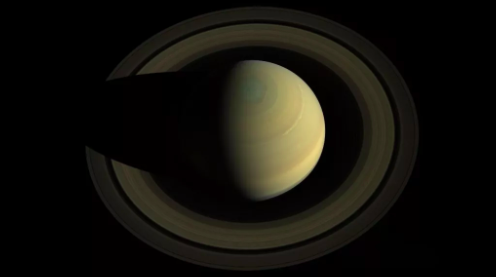The Beautiful Saturn and its Moons
Last Thanksgiving together with Jupiter and Venus, Saturn graced our night sky as they aligned and made our Thanksgiving memorable. We’ve been hearing about the news and information about Jupiter and Venus but not usually Saturn and its Moon. I am always in awe whenever I see the planet Saturn with its glorious ringlets on the internet. It looks so beautiful and majestic, like a queen adorned with a crystal crown - that’s how I imagine Saturn. But what is it exactly according to Science?
Saturn
(Image credit: NASA/JPL-Caltech/SSI/Cornell)
Saturn is the sixth planet from the sun and the second-largest planet in the solar system. It's the farthest planet from Earth visible to the naked eye, but the planet's most notable features — its rings — are best seen through a telescope. Saturn stands out among the planets thanks to these thousands of beautiful ringlets. Each of the four gas giant planets has rings made of ice and rock, but none are as spectacular or as complex as Saturn's. Saturn, like the other gas giants, is largely composed of hydrogen and helium.
Saturn, like Jupiter, is a gas giant with many of the same characteristics: a strong magnetic field generated by churning metallic hydrogen deep within, raging storms in its gaseous upper atmosphere, and a plethora of planet-like moons that are worlds in their own right. Saturn's rings and larger moons can be seen through small backyard telescopes.
Saturn was born shortly after Jupiter in the early days of the solar system, approximately 4.5 billion years ago. Both planets are thought to have formed closer to the Sun and then migrated out to their current positions around 4 billion years ago. Their gravity most likely accelerated the movement of asteroids and comets throughout the solar system, some of which collided with early Earth and may have brought water with them.
Moons
Saturn, like our other three outer planets, is a solar system unto itself, with a plethora of intriguing research targets. At least 82 moons orbit the ringed planet, the largest of which are active, planet-like worlds.
Titan
Titan is the largest moon. It looks like a planet on its own.
Titan, which is larger than Mercury, has an orange, hazy atmosphere that was likely similar to Earth's before life appeared here around 3.5 billion years ago. Titan's atmosphere and rain from the skies are made up of complex, organic molecules, which are one of the building blocks of life as we know it. We can learn about the possible starting ingredients for life on Earth and elsewhere by studying Titan.
Its surface is strikingly similar to Earth's, with a few key differences: its mountains and dunes are mostly made of ice rather than rock, and its rivers, lakes, and seas are filled with methane and ethane rather than liquid water. We believe a liquid-water ocean exists beneath the surface, but we don't know if the chemical mix is suitable for life or if there is an energy source similar to the hydrothermal vents found in Earth's oceans.
Enceladus
Enceladus is only 500 kilometers (310 miles) wide, so it could easily fit inside the state of Arizona in the United States. But beneath its icy crust is a saltwater ocean, which leaks into space via geysers on the surface to form one of Saturn's outer rings. We know that the ocean contains a variety of complex organic materials.
Mimas
Mimas is distinguished by a massive crater that resembles the Death Star from Star Wars. It, too, may have a subsurface ocean, though no material from the ocean appears to leak to the surface.
Some of Saturn's smaller moons are among our solar system's most photogenic. The worlds of Dione and Rhea are cratered snowballs with rocky cores. Hyperion resembles a massive sponge or coral reef. Iapetus has two faces, one icy and one dark, both coated with material from the comet-like moon Phoebe. Then there's Pan, a moon whose gravity has captured enough material from Saturn's rings to give it the appearance of a flying saucer!
Rings
This Cassini image from 2012 shows Titan and its host planet Saturn. Image Credit: NASA/JPL-Caltech/SSI
The rings of Saturn are thought to be fragments of comets, asteroids, or shattered moons that broke up before reaching the planet and were torn apart by Saturn's powerful gravity. They are composed of billions of small ice and rock chunks that have been coated with other materials such as dust. The ring particles range in size from tiny dust-sized icy grains to chunks the size of a house. A few particles are the size of mountains. If you looked at the rings from Saturn's cloud tops, they would appear mostly white, and each ring orbits the planet at a different speed.
Did you know that Saturn’s rings are named alphabetically in the order they were discovered. Rings A, B, and C are the three main rings and D, E, F, and G are fainter and newer discoveries. The ring system extends up to 175,000 miles (282,000 kilometers) from the planet but the vertical height in the main rings is typically around 30 feet (10 meters).

